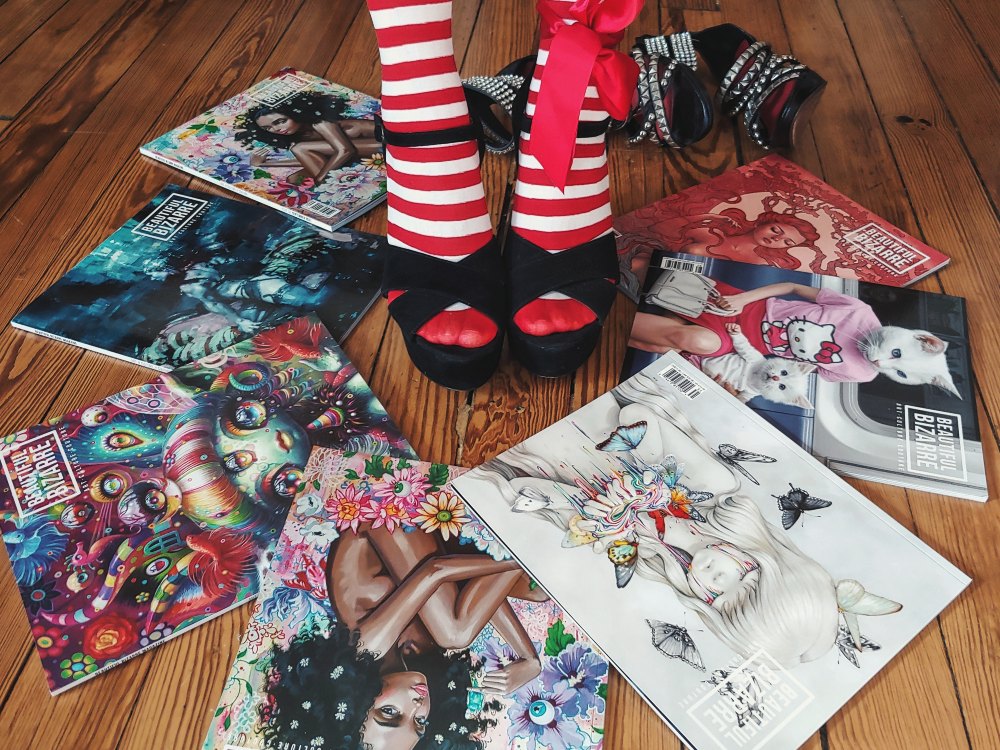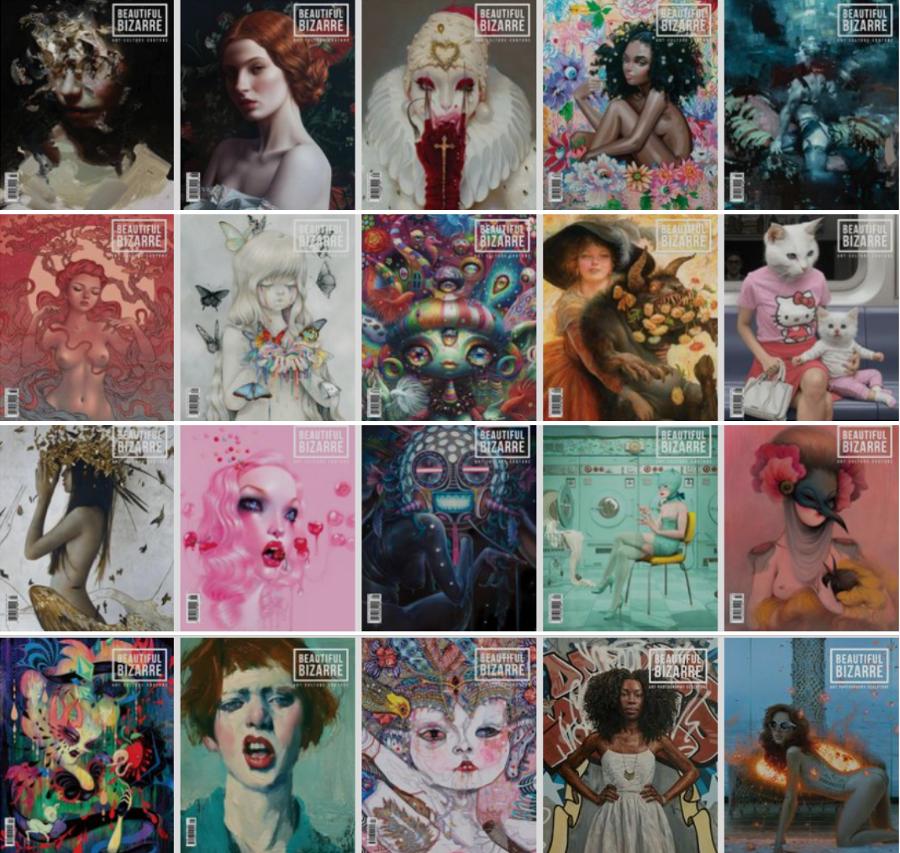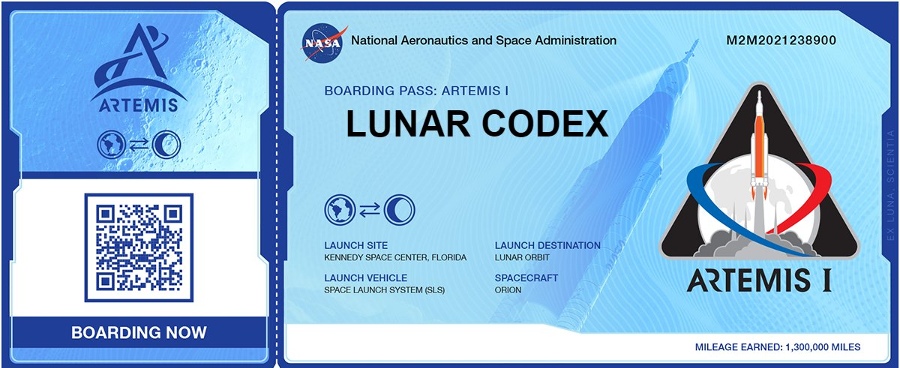Within Beautiful Bizarre Magazine’s indie-powered art universe, you may be familiar with Dr. Samuel Peralta’s name since Issue 38 of our magazine features the works of art that he chose for his personal collection as part of our Curator’s Wishlist. He describes the experience as being both enjoyable yet unexpectedly eye-opening since “an infinitely-deep pocketbook” didn’t compel him “to select the most expensive pieces, but rather the work that perfectly fit the collection.” While we’re sure that hearing about meritorious art never gets old, you’ve probably been quietly distracted up until now, with good reason! We’re just going to cut to the chase and say that you definitely do know him from something else – a project with a particularly cosmic pedigree that continues to have an immeasurable impact upon the artist community around the world.
The Lunar Codex is really all about inspiring artists to keep shining their light because that will inspire others to continue working. You never know when a dream might come true.

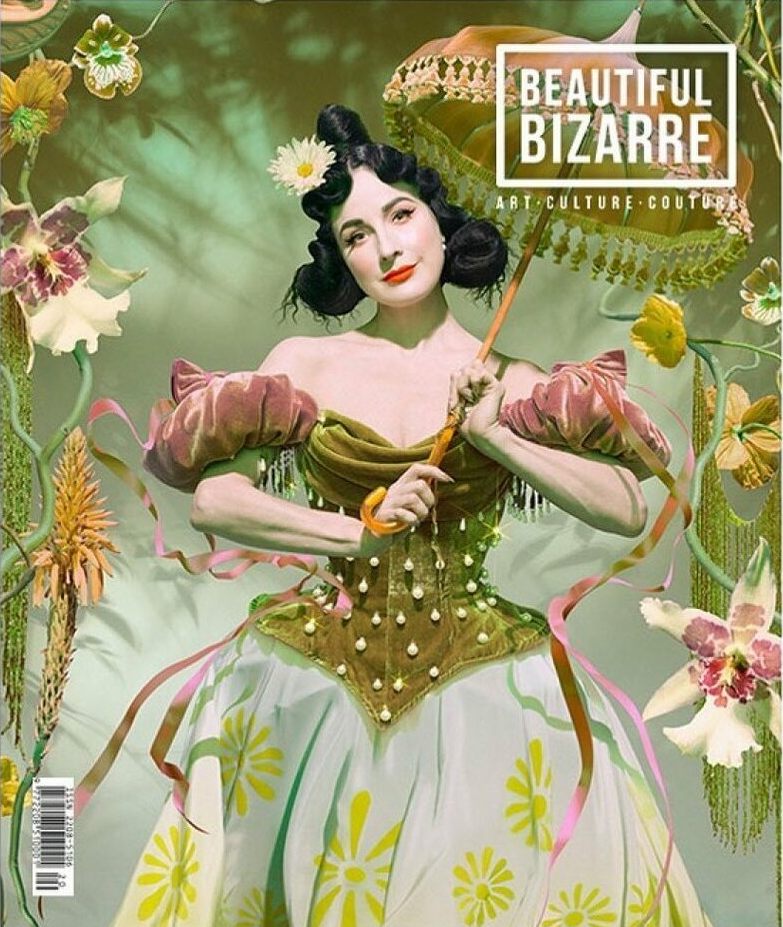
Muse: Dita Von Teese
Dr. Samuel Peralta is the founder and archivist of the Lunar Codex cultural time capsule, which is sending the creative output of tens of thousands of artists, writers, filmmakers, and musicians to the moon. His celestial message-in-a-bottle to future generations just so happens to include numerous issues of Beautiful Bizarre Magazine’s quarterly print publication, which means that the visual art and wordsmithing contributions of so many of our most esteemed creatives will soon be basking in starry effulgence. That’s right – Beautiful Bizarre Magazine is going to the moon!
A hearty cheers to one and all! What a truly incredible legacy both for Beautiful Bizarre Magazine and all of the exceptional artists whose work is now part of the Lunar Codex project. Our contemporary art publication will be included in two separate time capsules – Nova Collection and Polaris Collection.
NOVA COLLECTION
SpaceX/Intuitive Machines’ Nova-C Lunar Lander
This IM-1 mission, which includes the nickel microfiche-preserved cover art of Beautiful Bizarre Magazine (Issues 17 to 36), has a planned launch date of December 2022/January 2023.
Nova Archival Site: Vallis Schrasöteri in Oceanus Procellarum.
POLARIS COLLECTION
NASA Volatiles Investigating Polar Exploration Rover (VIPER)
Astrobotic’s Griffin Lunar Lander/NASA VIPER will include the entirety of Beautiful Bizarre Magazine (Issues 8 to 38, exterior and interior). NASA expects to launch this mission in November 2024.
Polaris Archival Site: Lunar South Pole.
Dear artists, the golden moment in which to consider the tremendous gravity of your achievements has officially arrived. This awe-inspiring honour has rendered our team moonstruck and immensely proud!

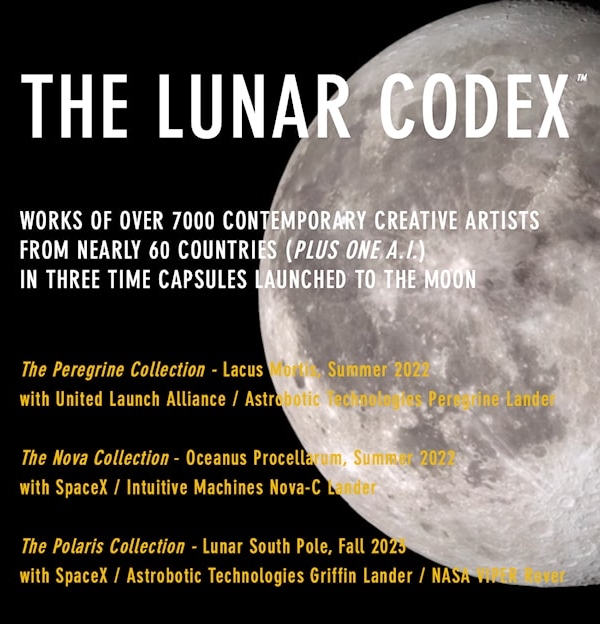
Samuel Peralta’s claim that “in its entirety, every single issue of Beautiful Bizarre Magazine is worth preserving” truly makes us blush, but our interview was born out of our desire to understand what compelled him to mastermind such a significant cultural, historical, and symbolic endeavor. In doing so, we quickly learned that it’s merely just one of the many high-level achievements – including penning and editing 37 books! – that makes him the very definition of a Renaissance man. “I think of my life as one of reinvention,” the entrepreneur/nuclear technologist/film producer/singer-songwriter/poet/science fiction novelist/art curator and collector told us of the mind-boggling number of art and science-based pursuits that continue to occupy his every waking moment. We are extremely pleased to share our chat with this wildly inspiring arts champion who is as much of a dreamer as he is a reaching for the stars achiever.
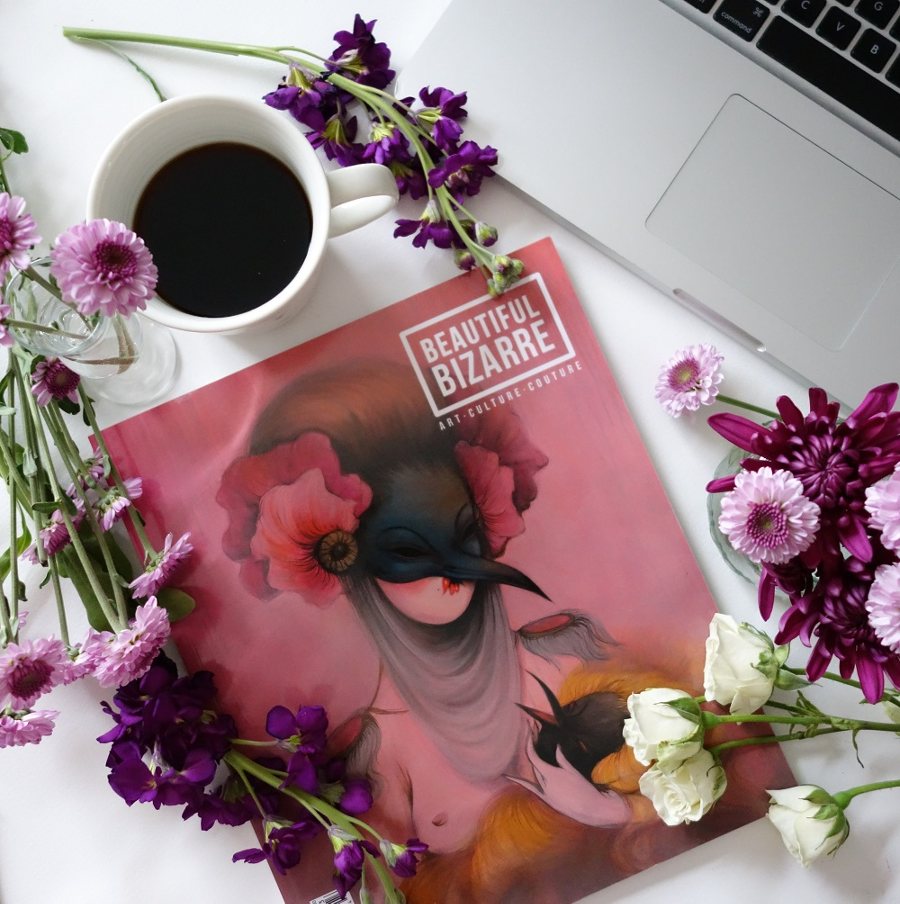
Image Styled/Photographed By Bella Harris.
I believe that anyone who ultimately discovers the Lunar Codex archives on the Moon will understand that long ago, we lived and created not just the technology advanced enough to journey here from Earth, but also created art and poetry, music and moving pictures, created works that had power and beauty…works that would endure.
Exclusive Interview With Dr. Samuel Peralta
The Lunar Codex is inspired by former rocket scientist/young adult sci-fi author Dr. Susan Kaye Quinn’s Writers on the Moon time capsule. Your project differs in that it reflects the global creative output of humanity, including art, music, literature, film, dance, and even podcasts. Of the many significant enterprises that you’ve spearheaded, has the emotional gravity of this one trumped them all?
Many of the projects I’ve focused on consciously try to elevate the art of others. Collecting an artist’s work is an act of validation. Publishing a literary anthology spotlights the work of dozens of writers. Producing a film brings the director, screenwriter, and the cast and crew closer to the dream of seeing their work on screen. The Lunar Codex is the same thing, magnified a hundredfold. It’s the ultimate anthology or global art exposition that brings the spotlight onto thousands and thousands of artists around the globe.
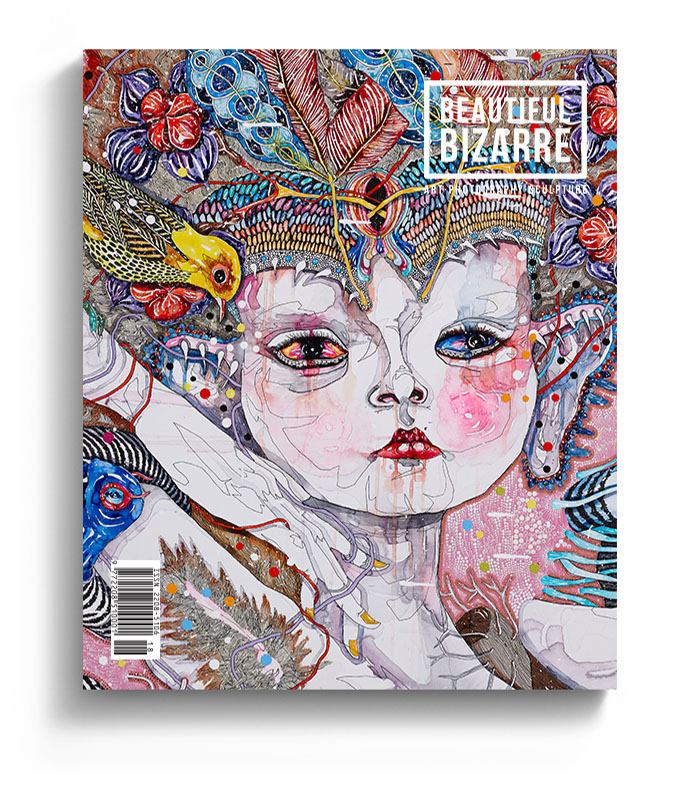

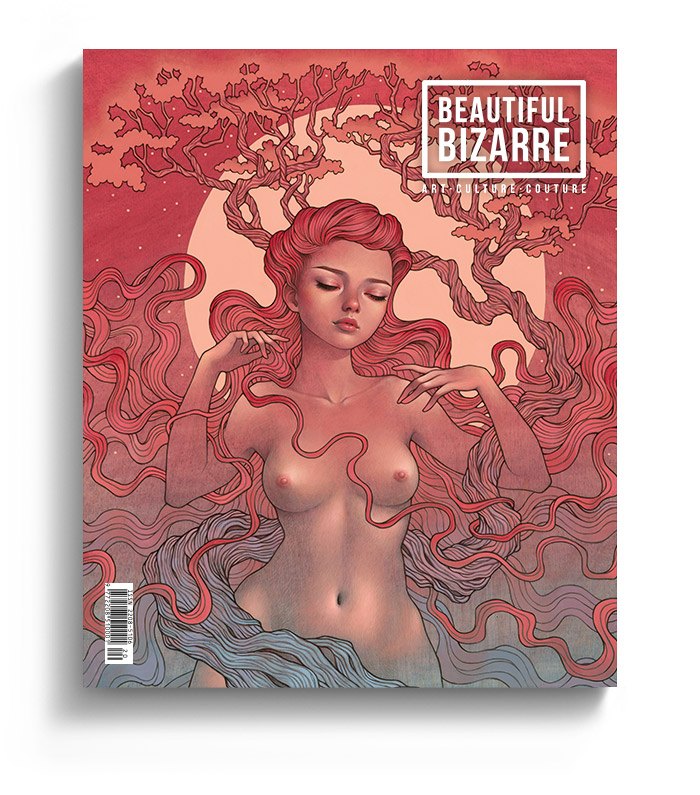
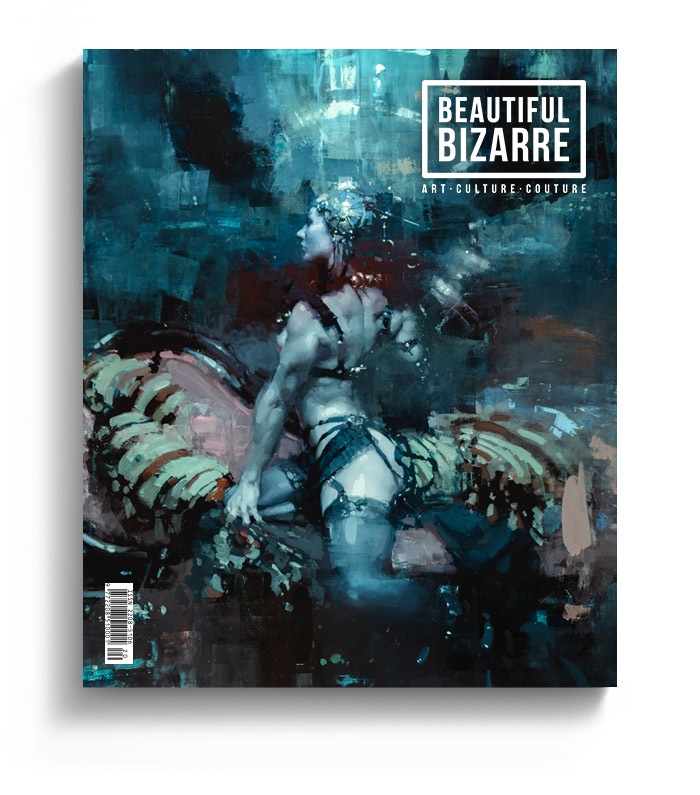
It began to dawn on me that the Lunar Codex is doing something not just personally important for the individual artists, but something culturally significant.
The three time capsules in your Lunar Codex project contain digital and analog representations of diverse creative output that is either microscopically etched onto NanoFiche disks or non-volatile memory cards and then housed within MoonBox canisters that ultimately hitch a ride to Earth’s only natural satellite. Two years into this vast undertaking, can you pinpoint when it morphed into a much more substantial cultural behemoth?
Moonstone was my first time capsule and is on the same launch as the Writers on the Moon (WOTM) time capsule. It includes only one poem etched on a silver disk, which predates the nickel NanoFiche disks of Nova and Polaris. What WOTM did with its 125 main authors – I, lucky to be among them – was help me to realize that I could share my payload space with others. Building on my Moonstone time capsule and WOTM’s, I bought payload space in a third MoonBox, and loaded more art and book files onto the Peregrine launch.
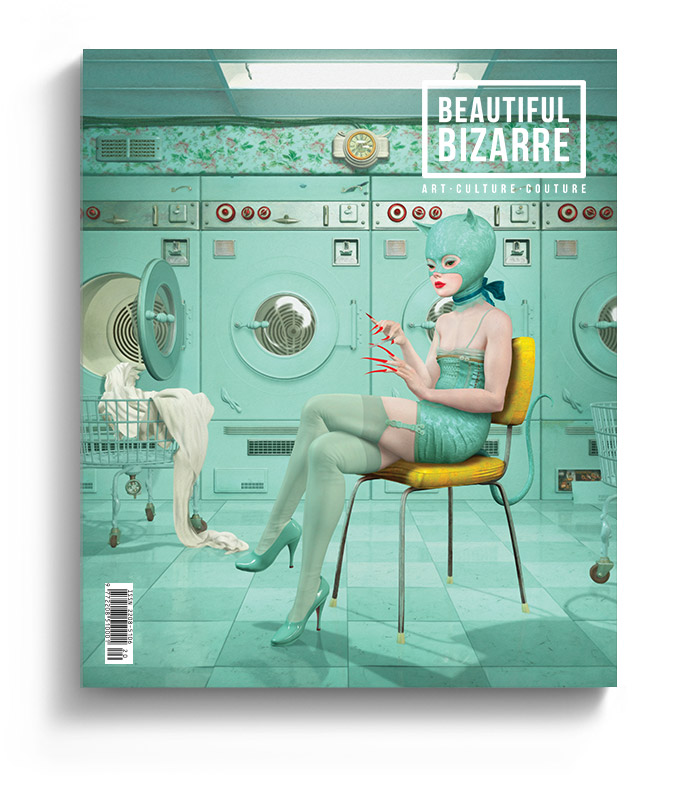
Ray Caesar

Troy Brooks
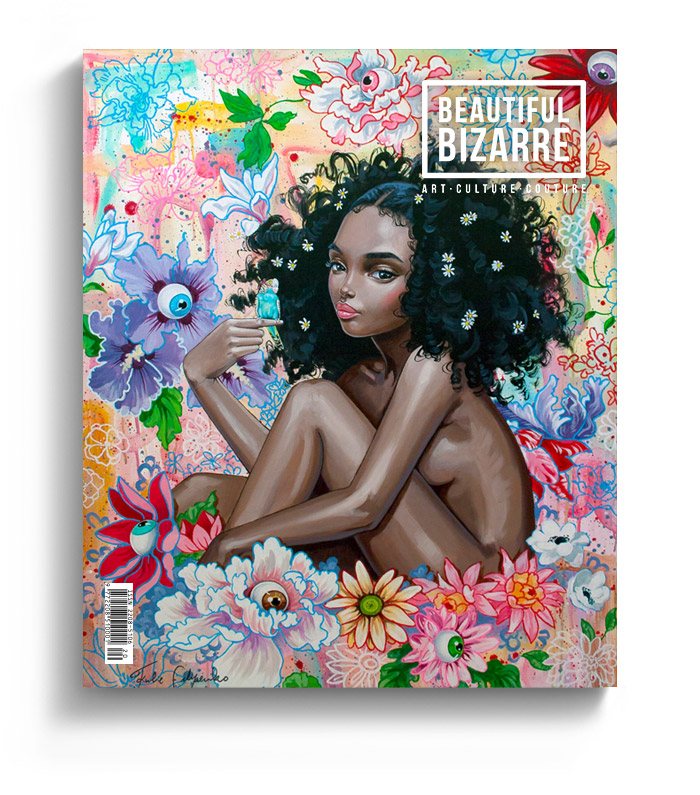
Julie Filipenko
Perhaps the turning point came when I was able to find space on a second launch – the Nova-C mission. I kept buying more payload space and loading the art of hundreds of additional artists. The Griffin mission gave me another opportunity to do it in a big way, so I decided to include as many contemporary curated artists as I could possibly include.
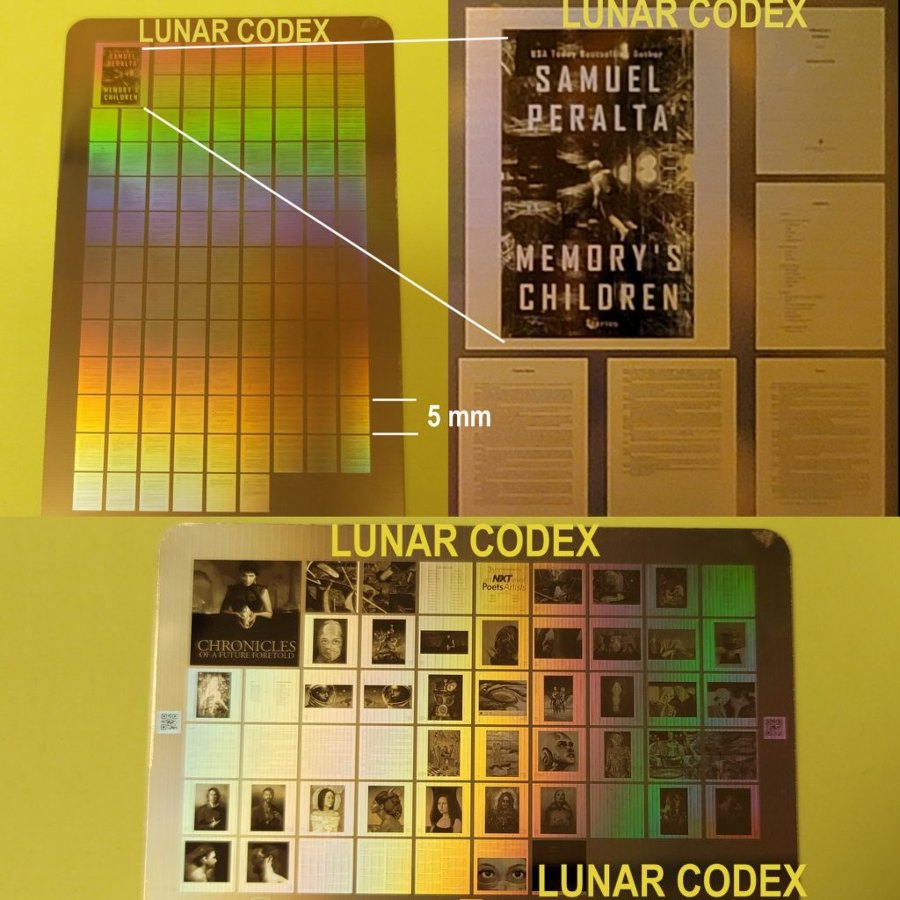
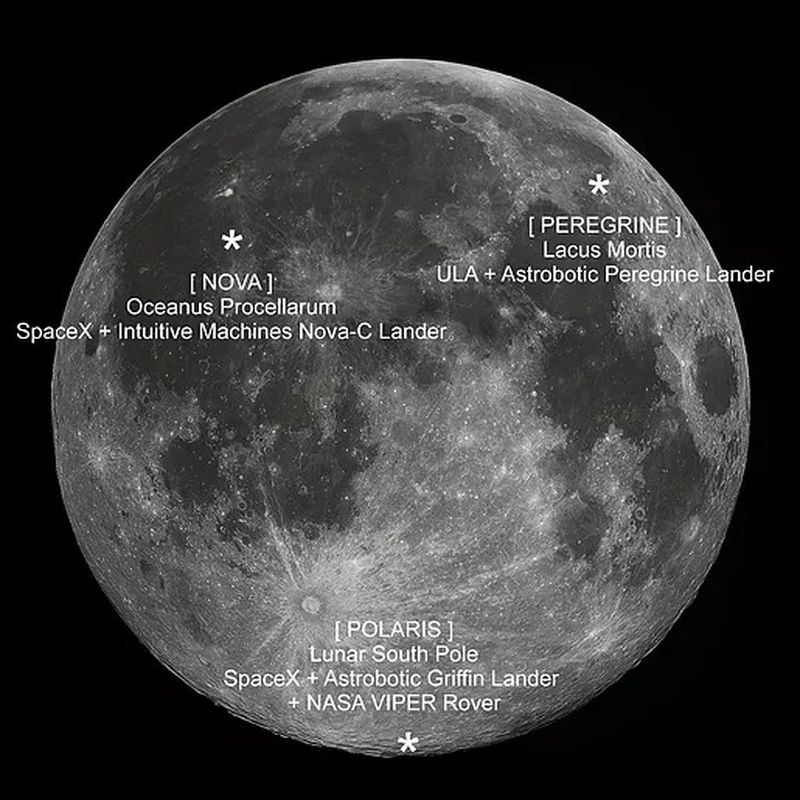
Many of the projects I work on consciously try to elevate the art of others. Collecting an artist’s work is an act of validation. Publishing an anthology spotlights the work of dozens of writers. Producing a film brings the director, screenwriter, and the cast and crew closer to that dream of seeing their work on screen.
You personally select all the creative material that you include in the Peregrine, Nova and Polaris Collections, the vast majority of which seems to channel a deep and wide indie spirit. In order to make the cut, what main quality must each catalogued item possess?
Lunar Codex included creators must reach a level of professionalism by being curated by someone with experience, or someone I trust, such as an anthologist, curator, editor, collector, or a magazine, gallery, museum, institution.

Image Styled/Photographed By Bella Harris.
How many new items do you add each week to the Lunar Codex and how do you find out about worthy contenders?
Any given day of the week, I send out several queries and it depends on who gets back to me and when. Having been active in the arts, books, music, and film industries provides me a key network of contacts, so it’s based on degrees of separation from there.

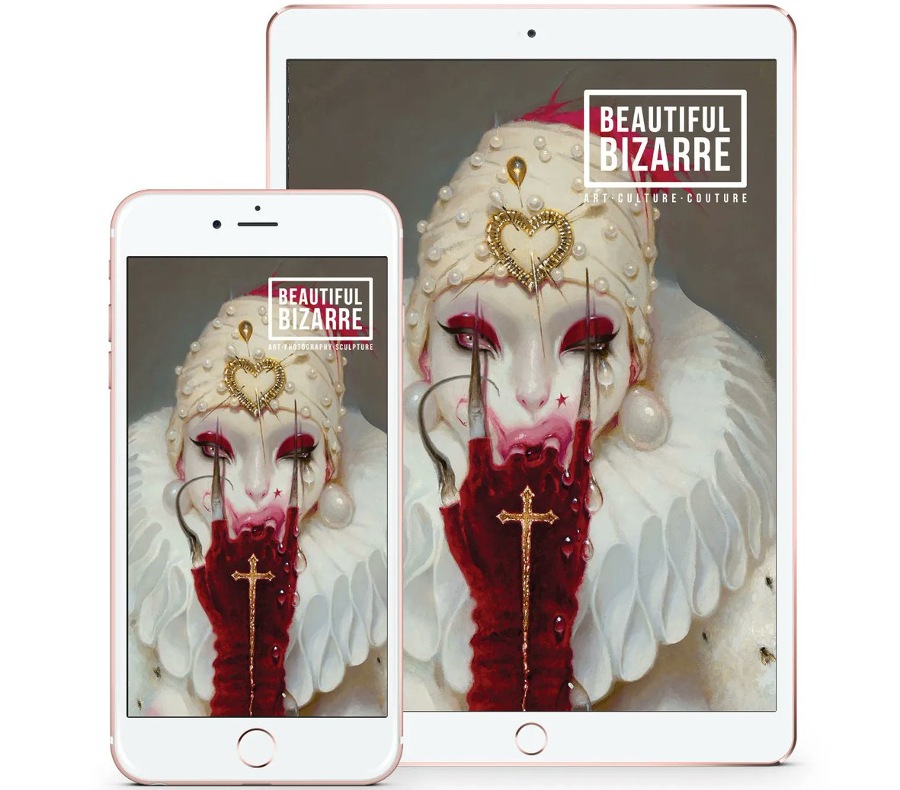
The Lunar Codex is the ultimate anthology or global art exposition that brings the spotlight onto thousands and thousands of artists around the globe.
Once the creative material that you curate for the Lunar Codex is selected and confirmed, how does it end up being converted into its microscopic, space-worthy incarnation?
Specifically, with Astrobotic, the 2022 payload is memory cards. For the 2023/24 launch, the payload includes memory cards and pre-etched NanoFiche disks. For the Intuitive Machines launch, I upload files to my payload partner.
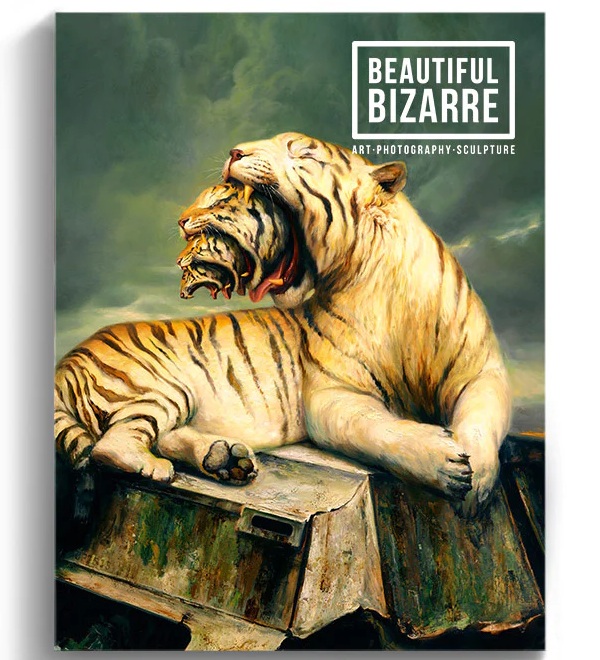

You continue extending the Lunar Codex opportunity to tens of thousands of creatives at no cost, but it does sound like an expensive endeavor, financially as well as labor-wise. What does it entail?
I’m grateful to my technology partners who have given me extraordinary volume and discretionary pricing on archiving and launch costs, mainly because they believe in what we’re doing. Still, every artist, writer, musician, and filmmaker I bring on board costs us time, resources, and expenses. That nice Chagall or Matisse we’ve been eyeing? We have to put off purchasing it for a little while. But look at what we’ve gained – an entire gallery of art, a library of books, music to fill a concert hall, and an entire film festival! It’s glorious.

Image Styled/Photographed By Bella Harris.
Is your Lunar Codex to do list perpetually a mile long? Have you ever felt a little overwhelmed or close to saying, “I really want my free time back!”
All the time. The project does have an end date, however. When the lander company tells you to drop everything and send your payload to them, and you do, it’s done. That happened in March 2021 for Peregrine; it’ll happen very, very soon with the Nova-C, and later on this year for Griffin. Then all I have to do is wait for the launch, start writing the book about this project, and plan what’s next.
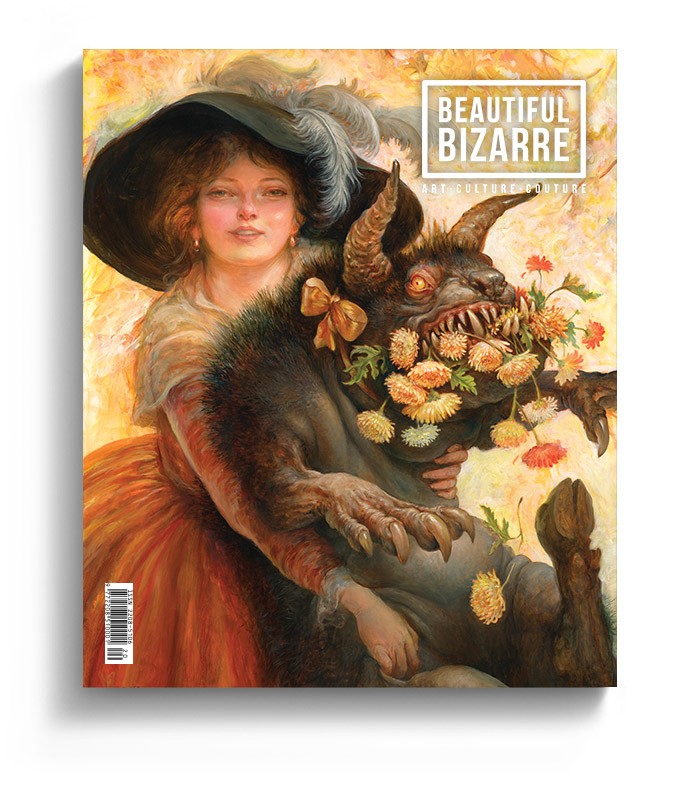
Omar Rayyan

Yoko d’Holbachie
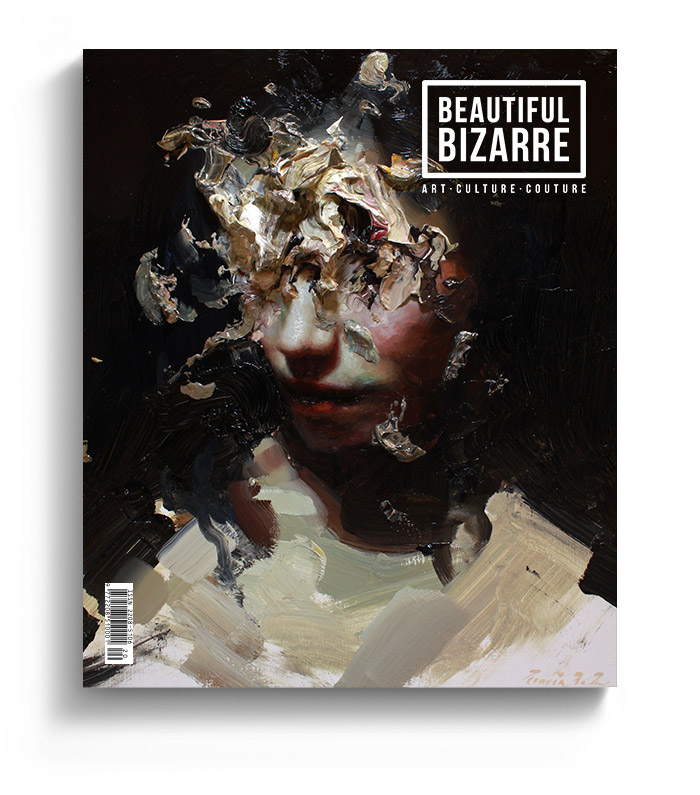
Henrik Aa. Uldalen
What are some of the most echoed sentiments among Lunar Codex-included artists? Is there a general collective elation over finally being seen?
They say it’s life-affirming, life-changing, and that everything they’ve worked for in silence to this point has suddenly been given a reason. And I tell them that it’s the same for me. That’s what this project is really all about – to inspire artists to keep shining their light because that will inspire others to continue working. You never know when one day a dream might come true.
Look at what we’ve gained with the Lunar Codex – an entire gallery of art, a library of books, music to fill a concert hall, and an entire film festival! It’s glorious.
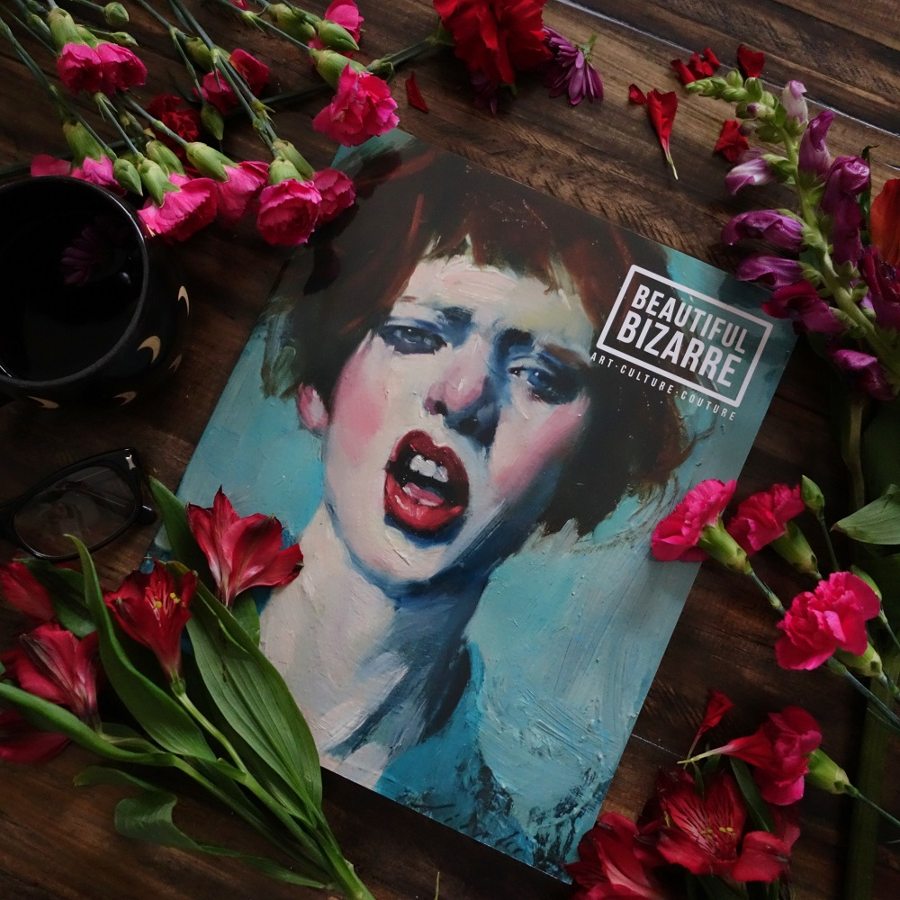
Image Styled/Photographed By Bella Harris.
Have there been any specific Lunar Codex milestones that have made you pinch yourself?
It was only when artists and news reporters began asking questions that I began looking at the statistics of what I was doing. They asked things like:
- Are we the first to send women artists to the Moon?
- What about artists of colour or disabled artists?
- How many countries are represented in the Lunar Codex?
- How many U.S. states and Canadian provinces are included?
I hadn’t collected that data before, so as I started tabulating it, I began hearing people celebrate the inclusion of, say, a Lebanese-Armenian poet or a Ukrainian artist planting their cultural flag on the Moon through the Lunar Codex. That’s when it dawned on me that we were doing something not just personally important for the individual artists, but something culturally significant.
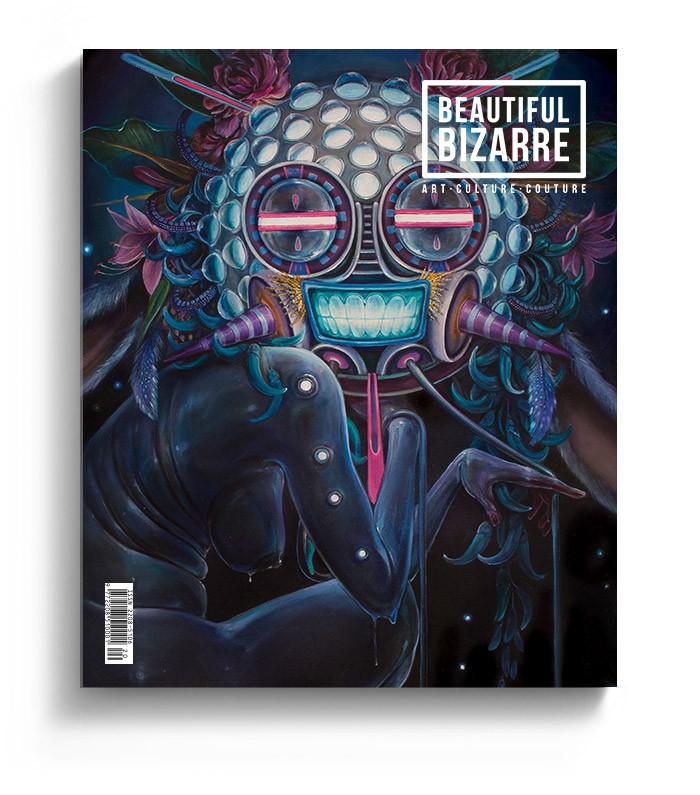
Hannah Yata
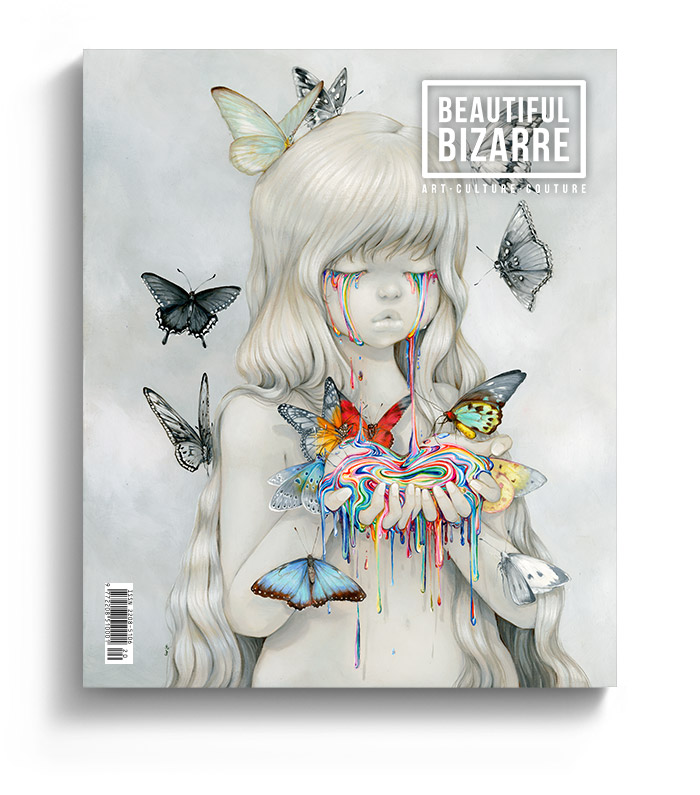
Camilla d’Errico

Mary Jane Ansell
Analog images of the myriad pieces of creative output in the Lunar Codex are easily viewable with a magnifying glass or microscope. What kind of cultural narrative do you imagine the beings who discover your time capsules will form in their minds simply by studying those visuals?
I believe anyone who ultimately discovers the Lunar Codex archives on the Moon will be advanced enough to decipher everything, just as we can still decipher Babylonian even when the writing has been eroded down to the tablet surface. Whether our civilization still exists or not, it’ll tell these explorers exactly what we intended – that once long ago we lived and created not just the technology advanced enough to journey here from Earth, but also created art and poetry, music and moving pictures, works that had power and beauty, and works that would endure.
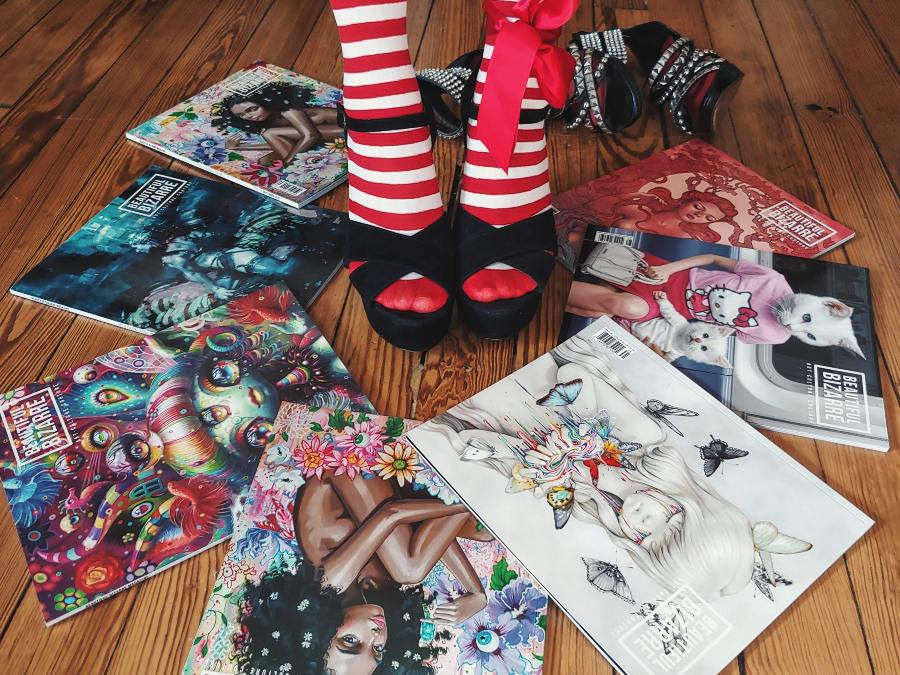
Image Styled/Photographed By Bella Harris.
Do you have any thoughts on the reaction of future moon dwellers once they lay their eyes on Beautiful Bizarre Magazine?
I imagine that it would be a similar reaction to explorers first setting sight on the hieroglyphics in the royal tombs at Abydos in Egypt, or the cave paintings in Lascaux, France, or our own reaction were we to discover an intact Library of Alexandria – that of wonder at the discovery of a new world, our world.

Malcolm T. Liepke

Miss Van
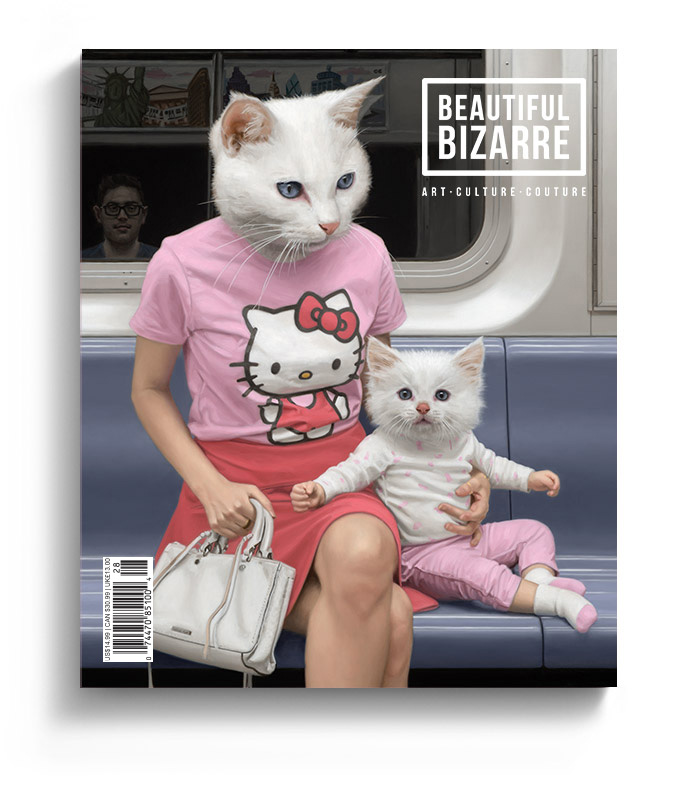
Matthew Grabelsky
Removing all barriers – cost, time, logistics, etc. – is there a super duper new-new-new ambitious project bobbing around in the back of your mind that could even come close to touching the Lunar Codex? Something plucked straight from your most ‘out there’ sci-fi imaginings?
Mars. While the nickel-based technology is optimized for the Moon, the technology for the gold-based NanoFiche card that I use for show-and-tell has been successfully tested via the Hawaii Space Exploration Analog and Simulation (HI-SEAS) for the red planet. So…Elon? Ready when you are.
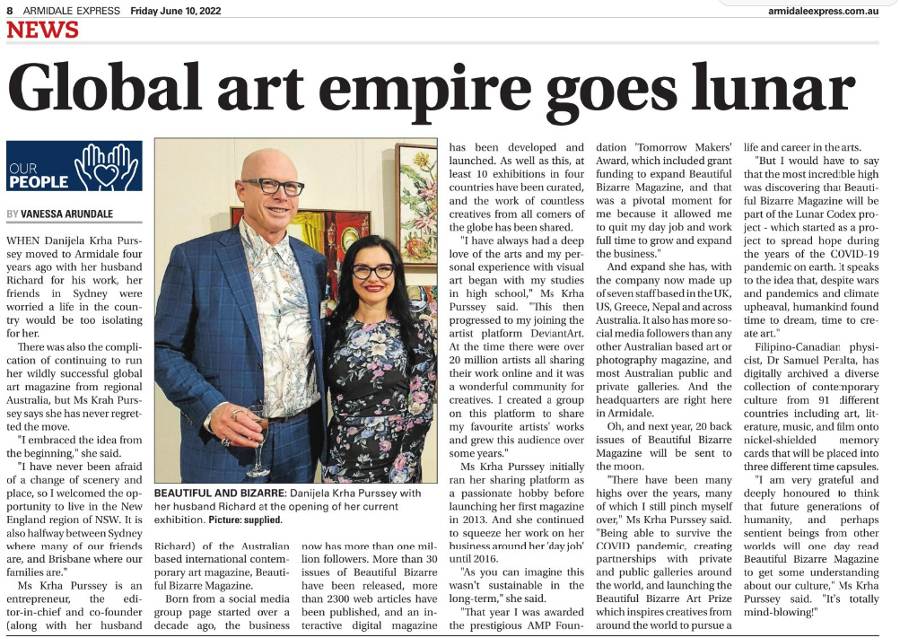
Lunar Codex Social Media Accounts
Samuel Peralta Social Media Accounts
Website | Instagram | Facebook | Twitter | Linked In | Pinterest
Note: This article was updated on 8 Sept 2022 to reflect that more issues of Beautiful Bizarre Magazine were added to the Polaris collection. The original published article stated only issues 17 – 37 were included.


